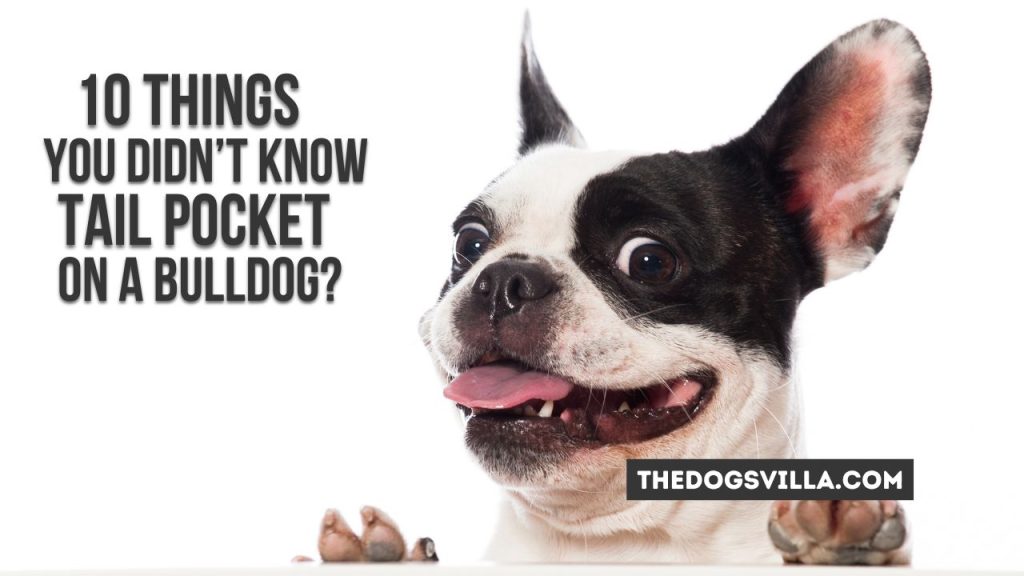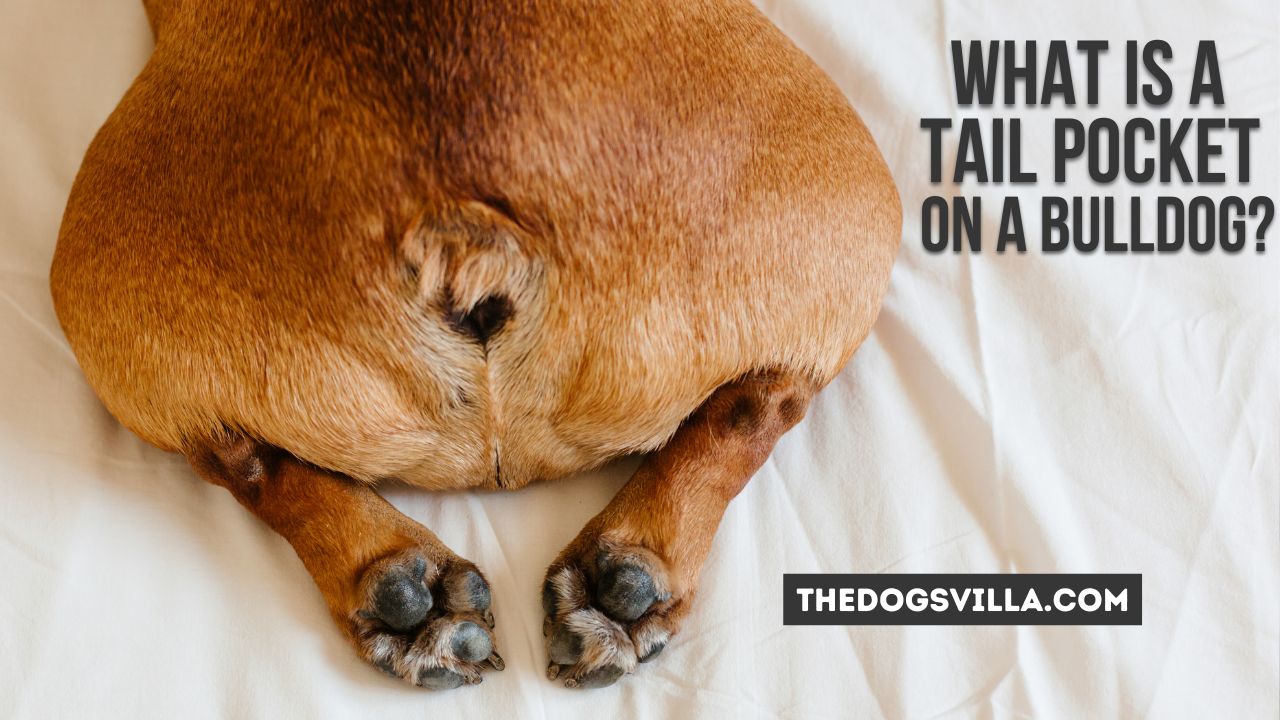The tail pocket is a unique anatomical feature seen in some bulldog breeds. This loose fold of skin over the base of the tail serves functional and conformational purposes in short-tailed bulldog types. While not present in all bulldogs, the tail pocket remains an important breed characteristic in several varieties.
Contents
- 1 What is a Tail Pocket on a Bulldog
- 2 Breeds with Tail Pockets
- 3 Conformational Faults
- 4 Caring for Bulldog Tail Pockets
- 5 10 Things You Didn’t Know About Tail Pockets on a Bulldog
- 5.1 1. Not All Bulldogs Have Them
- 5.2 2. They Originated for Bull-Baiting Function
- 5.3 3. Too Much Wrinkling Causes Issues
- 5.4 4. They Extend to Protect Tails
- 5.5 5. Tail Pockets Help Dogs Communicate
- 5.6 6. Different Breeds Have Different Pockets
- 5.7 7. They Require Maintenance to Stay Healthy
- 5.8 8. Sometimes Puppies Lack Them Then Develop Them Later
- 5.9 9. Other Dogs Sometimes Have Them Too
- 5.10 10. They Can Be Problematic for Breeding and Whelping
- 6 Frequently Asked Questions
- 7 Conclusion
What is a Tail Pocket on a Bulldog
The tail pocket refers to an extra fold or pouch of loose skin encasing the basal portion of a bulldog’s tapered, screwed, or straight tail. Rather than connecting flush, the skin drapes lower along the thighs with looseness allowing free tail movement. Bulldog tails characteristically sit low between hocks nearly level with the flank.
Appearance and Position
When viewing a dog from behind, the tail pocket presents as extra baggy skin visibly drooping lower than the tail’s actual set-on. Frequently only the distal half or third of the tail emerges from the pocket. The surrounding loose flesh often appears wrinkled.
Tail pockets positioned too high or too low constitute faults in show bulldogs. Correct pockets allow tails to emerge halfway down the thigh with ample surrounding skin able to cup the entire tail base when screwed upwards in excitement.
Purpose and Function
The tail pocket serves dual functions – conformational aesthetics plus protecting tail vertebrae. Show standards specify the ideal amount and position of pocket looseness. The ample folds also buffer tailimpact if dogs back into objects, preventing injury. Athletic bulldogs utilize the flexible pocket skin to maximize tail positioning while running or changing direction.
Breeds with Tail Pockets
While seen in various short-tailed molosser breeds, tail pockets remain most pronounced and integral in several bulldog varieties. Breed-specific nuances occur regarding pocket extent.
English Bulldogs
Classic English bulldogs sport heavily wrinkled tail pockets with characteristics explicitly described in the breed standard. The standard specifies the pocket should sufficiently envelop the whole tail base down to the dock, suspended halfway down the thigh. Excessively tight or overly loose pockets both fault.
American Bulldogs
Though sometimes cropped, American bulldogs carry their straight, tapered tails at the hock level enclosed in a neat pocket. The looseness allows for free tail movement when working stock yet no excess wrinkling. Less flews present compared to the English variety.
French Bulldogs
Due to the challenging whelping often requiring cesarean delivery, French bulldogs today may have naturally short, screwdriver tails or no tail at all. Those with short tails possess moderate tail pockets suspended slightly above the hocks. The pocket helps protect these screw tails prone to fracture.
Australian Bulldogs
A recently established working breed blending various Bulldog lineages, Australian Bulldogs exhibit loose tail pockets distinctly set between the thighs. Tails emerge halfway from the deep pockets best seen when dogs screw tails upward.
Victorian Bulldogs
This newer attempt to recreate the now-extinct 19th century Victorian Bulldog displays a loose thigh-level tail pocket as described in historical references. The pocket should frame the entire deep-set tail base.
Conformational Faults
To meet breed standards, bulldog tail pockets must demonstrate appropriate extensiveness and position to score well in conformation showing. Common faults include:
High-Set Pockets
If pockets set too high above the flank level, insufficient looseness occurs to fully encapsulate the thick tail base when screwed upwards. Overly short pockets unable to cup the whole tail also risk spinal injury if tails hit firm objects.
Excessive Pocket Wrinkling
While some pocket wrinkling gives a melted, cobby appearance, overdone pendulous pockets burden movement. Severely loose pockets prone to trauma also collect debris and moisture leading to infection. Oversized pockets unable to hold position constitute faults.
Tight Tail Pockets
Insufficiently loose pockets restrict tail movement which bulldogs utilize for expression and athletic agility. Taut pockets also chafe and rub causing lesions. Judges penalize tight pockets restricting form and function.
| Conformational Fault | Description |
|---|---|
| High-set pockets | Set too high above hocks, cannot fully enclose tail base |
| Excessive wrinkling | Overly pendulous pockets burden movement and collect debris |
| Tight pockets | Restrict tail movement and cause chafing |
Caring for Bulldog Tail Pockets
The folds of skin creating the characteristic tail pocket require special attention to keep the area clean and monitor for infection. Owners need to regularly inspect and gently cleanse bulldog pockets.
Cleaning the Tail Pocket
Use a soft washcloth dampened in mild soap and water to gently wipe inside the pocket creases. Carefully dry the area after washing, including in any skin folds. Perform cleansing at least weekly when bathing or more often if needed.
Checking for Infection
Visually inspect tail pockets during cleaning for any signs of redness, discharge, odor, or debris buildup indicating possible infection. Catching and treating early prevents progression to painful abscesses within pocket tissue. Oral antibiotics often resolve minor infections.
Grooming Considerations
Some show exhibitors use hairspray or gel to neaten pocket wrinkles and surrounding coat for competitions. However, these stylizing products can also trap moisture and bacteria if not washed out, risking infection. skip styling products for pets.
Monitoring for Damage
Make sure pockets don’t catch or tear on fences, hooks, or other environmental hazards. Torn pockets require veterinary repair to prevent worsening. Also monitor for punctures or embedded foreign material necessitating prompt attention to avoid abscess.
10 Things You Didn’t Know About Tail Pockets on a Bulldog

Many bulldog varieties sport characteristic loose folds of skin over the base of the tail known as tail pockets. These distinct pouches seem integral to the bulldog silhouette. Yet misconceptions and lesser-known facts abound regarding tail pocket form and function.
1. Not All Bulldogs Have Them
While tail pockets prove nearly ubiquitous in screw-tailed English Bulldogs, not all bulldog breeds feature the anatomically distinct pouches. For example, French Bulldogs with congenital taillessness or truncated tails obviously can’t develop overlying pockets. Similarly, longer-tailed Boston Terriers lack tail-framing pockets even if some wrinkling occurs at the root.
2. They Originated for Bull-Baiting Function
Historically the folds of skin surrounding early bulldogs’ short, strong tails served a gripping purpose during bull-baiting. If the bull caught a bulldog’s tail, the loose skin helped the dog pivot away rather than face spinal injury. The pocket allows modern bulldogs to also rapidly reorient during athletic maneuvers.
3. Too Much Wrinkling Causes Issues
While pockets should fully encase thick-based tails according to most standards, excessively loose pendulous pockets burden movement and collect moisture that breeds infection. Severely wrinkled pockets prone to trauma and debris buildup usually demand surgical intervention.
4. They Extend to Protect Tails
Bulldog tail pockets contain more than just skin – the looseness extends internally to envelope vertebral and muscular tail components. This helps cushion tails from fractures if dogs back abruptly into walls or furniture. The loose skin also buffers blows during animal confrontations, historically vital to bulldogs’ roles.
5. Tail Pockets Help Dogs Communicate
Screw-tailed breeds like English Bulldogs rely on tail positioning and visibility to “talk”. The pocket skin gives them greater ability to emphasize signals, curling tails upwards into highly visual alerts or tightly clamping tails against threats. Form enhances overall function.
6. Different Breeds Have Different Pockets
While tail pockets universally center around screw or bob tails, nuances differentiate breeds. For example, Old English Bulldog standards mandate severe fold depth while modern English Bulldog pockets should avoid overdone pendulousness. Australian Bulldog tail pockets appear less heavy in surround skin.
7. They Require Maintenance to Stay Healthy
Unlike other skin folds, bulldog tail pockets usually demand regular cleaning inside all crevices. Debris readily collects, causing irritation and infection if not removed, especially in humid climates. Surgical correction rarely proves necessary for healthy dogs maintained hygienically.
8. Sometimes Puppies Lack Them Then Develop Them Later
Occasionally bulldogs mature into tail pockets not initially evident. For example, some young English Bulldogs have moderately curled tails lacking surrounding folds which acquire pockets during adulthood. If underlying tail genes and anatomy align, delayed expression can unfold.
9. Other Dogs Sometimes Have Them Too
Though quintessentially bulldog, other heavy wrinkled, short-tailed molosser breeds sporadically feature vestigial flesh pockets around their bobbed tails. Rare examples include the Broholmer, Continental Bulldog and various Bullmastiffs. These pockets likely stem from similar genetic origins.
10. They Can Be Problematic for Breeding and Whelping
While pockets don’t inherently influence fertility, excessively thickened, tight tails characteristic of extreme pocket depth can obstruct natural breeding. These tails also complicate vaginal delivery of puppies more often requiring cesarean section for safety during birth.
Frequently Asked Questions
Do all bulldogs have tail pockets?
No. Only bulldog breeds with naturally short, screwed or bobbed tails possess conformational tail pockets. For example, Bull Terriers have long tails lacking pockets. Similarly, miniature Bull Terrier and Boston Terrier tails set directly against the rump without loose folds. Tail pockets mainly occur in traditional bulldog varieties.
Are tail pockets linked to screw tails?
Screw or corkscrew-shaped tails don’t automatically mean a dog has a tail pocket. However, breeds defined by signature tightly curled tails like the English Bulldog almost always have accompanying loose pouches enclosing the tail base. These pockets facilitate tight curling by providing flexible skin.
Can tail pockets be surgically corrected if too loose?
Yes, in some cases tail pocket reduction surgery removes excess skin if pockets become pendulous to the point of infection risk or functional impairment. However in show dogs, this cosmetic procedure could reduce conformity to the breed tail pocket standard. Most dogs tolerate sculpting procedures well.
Do other wrinkled breeds have tail pockets?
Some, but not all similarly wrinkled breeds demonstrate actual tail pockets. For example, while Shar Peis and Chow Chows feature heavily folded skin, their longer curled tails traditionally set right against the rump with no pocket. But a few heavily wrinkled molosser breeds like the Broholmer display vestigial tail pockets.
Conclusion
The tail pocket constitutes a special loose pouch enclosing bulbous tail bases in several traditional bulldog breeds. Conformation standards dictate optimal pocket looseness framing screwed or bobbed tails. Besides contributing to breed type, pockets serve protective and athletic functions. Conscientious owners must regularly check pockets for debris and infection. When presenting the right position, depth and moderate wrinkling, the tail pocket remains a distinctive asset accentuating the bulldog’s powerful, coiled appearance.

